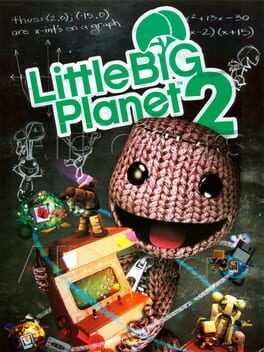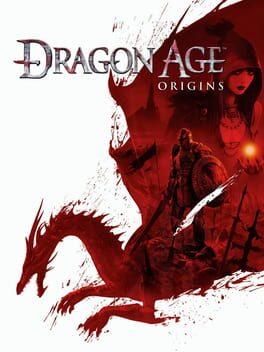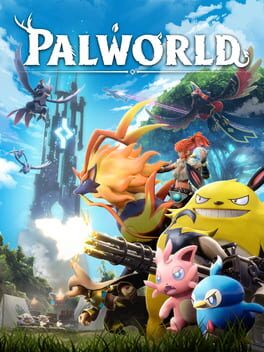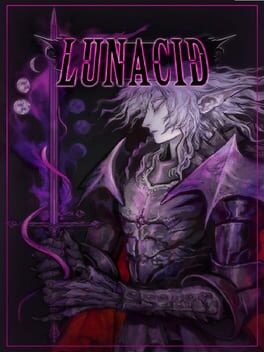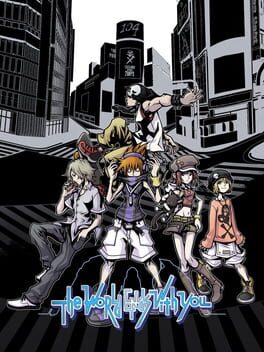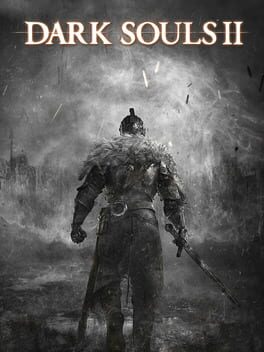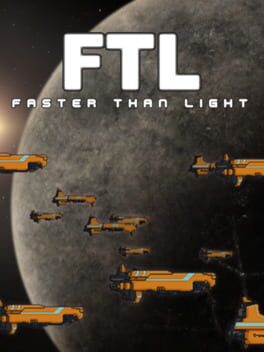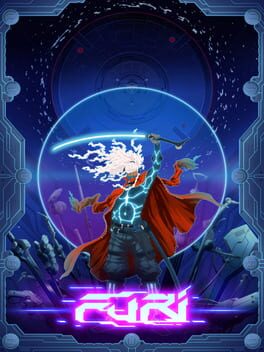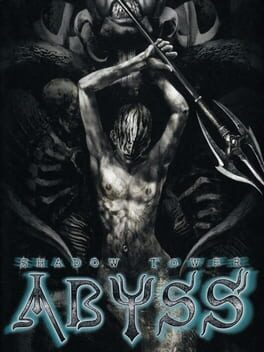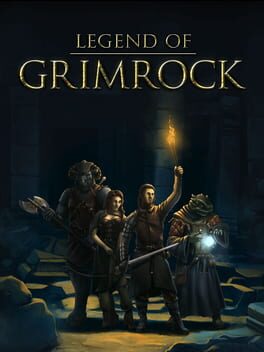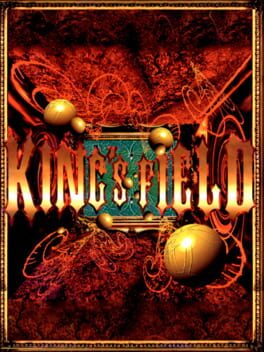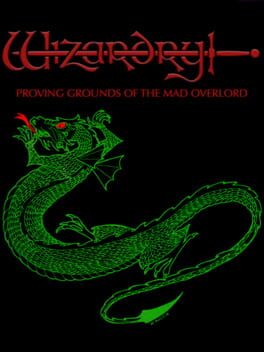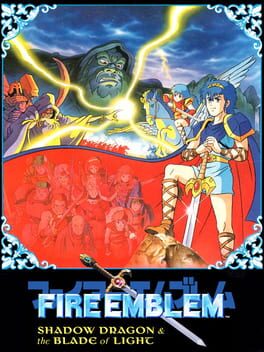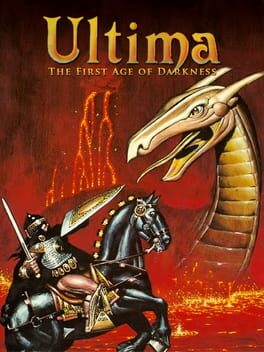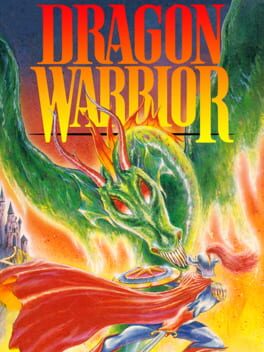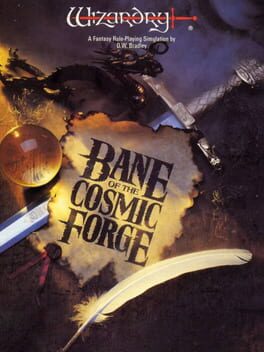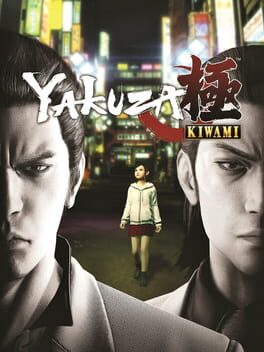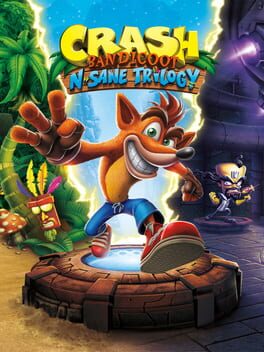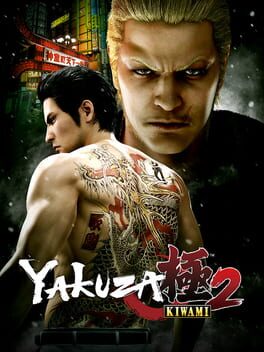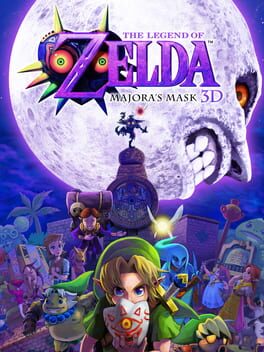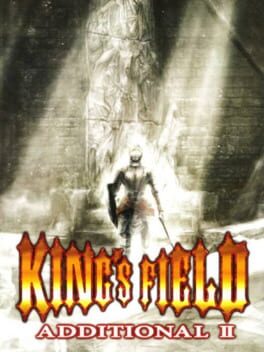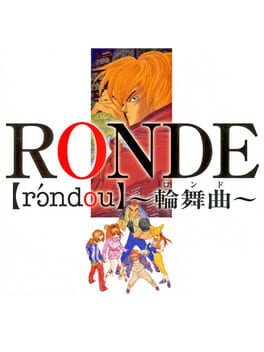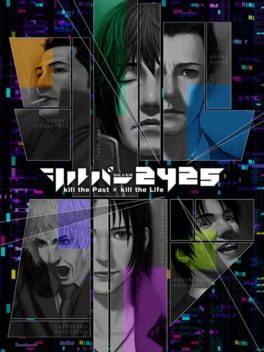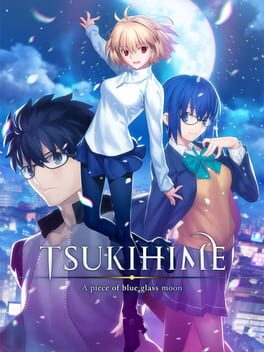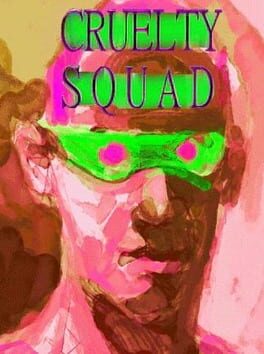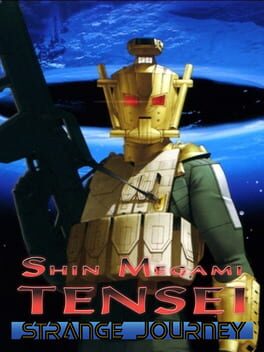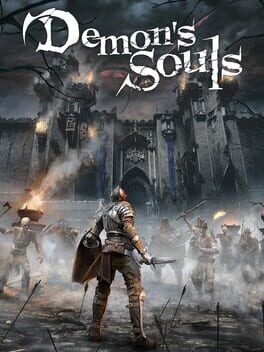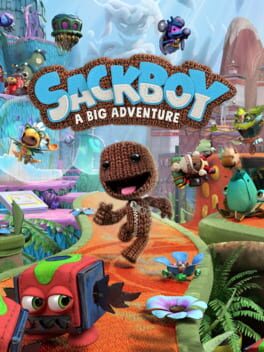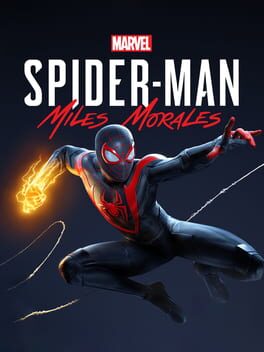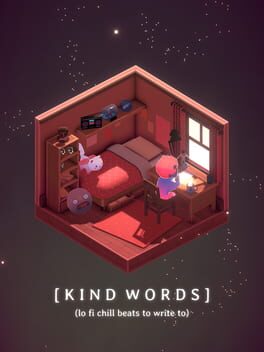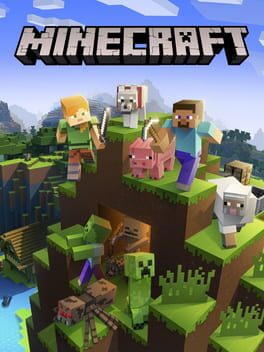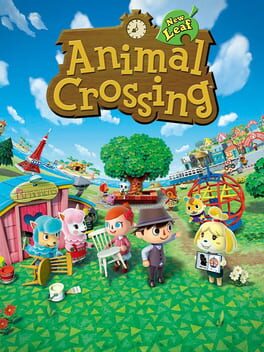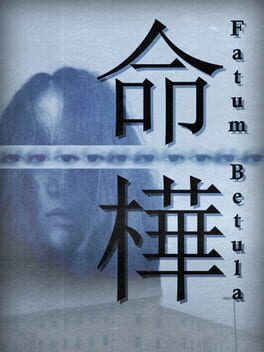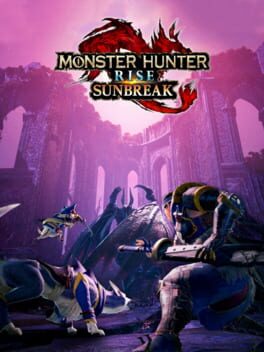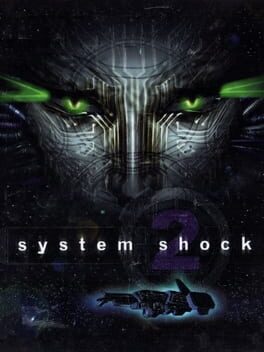EpicGamerHater
139 reviews liked by EpicGamerHater
LittleBigPlanet 2
2011
Dragon Age: Origins
2009
This review contains spoilers
WHAT I LIKE THE MOST ABOUT DRAGON AGE: ORIGINS
- The interaction with companions; their missions, conversations, the way they really feel like companions and not like burdens or shields.
- The lore in general. It is intriguing to know the motivations of the glooms, why there are dragons, what happened in the previous ruins, what is the origin of the races, what is beyond Ferelden.
- Build your character. From the personality that you give him in the dialogue options, such as class, race, specializations, skills, etc. It takes time to do your
"Definitive character," but in the end you feel it's worth it.
- The epic of the story. After all, how many times is one the hero destined to save the world?
- There are enough decisions that affect the story. As simple as killing or not killing someone, helping a certain group, turning one of your companions into a king or even taking the throne yourself; all this greatly influences immersion.
- The tactics. Although at first it may seem complicated, once you give yourself the time to understand them you will see how it rewards. Seeing how your group works perfectly is very satisfying.
- The initial stories. They are perfect, they add a lot to the role-playing section and gives it a lot of replay value.
The reason I like it so much lies in his charisma, his attention to detail, his setting and the deep way in which his world can connect with you.
If you like RPGs and fantasy then I highly recommend it. What if you've never played an RPG? Then you can watch a gameplay to see if it would be something you would like or not.
Dragon Age: Origins is an incredible video game, and once you finish it you want to lose your memory just to be able to enjoy this adventure again. Since knowing a story like that of Ferelden's Hero is something that rarely happens.
- The interaction with companions; their missions, conversations, the way they really feel like companions and not like burdens or shields.
- The lore in general. It is intriguing to know the motivations of the glooms, why there are dragons, what happened in the previous ruins, what is the origin of the races, what is beyond Ferelden.
- Build your character. From the personality that you give him in the dialogue options, such as class, race, specializations, skills, etc. It takes time to do your
"Definitive character," but in the end you feel it's worth it.
- The epic of the story. After all, how many times is one the hero destined to save the world?
- There are enough decisions that affect the story. As simple as killing or not killing someone, helping a certain group, turning one of your companions into a king or even taking the throne yourself; all this greatly influences immersion.
- The tactics. Although at first it may seem complicated, once you give yourself the time to understand them you will see how it rewards. Seeing how your group works perfectly is very satisfying.
- The initial stories. They are perfect, they add a lot to the role-playing section and gives it a lot of replay value.
The reason I like it so much lies in his charisma, his attention to detail, his setting and the deep way in which his world can connect with you.
If you like RPGs and fantasy then I highly recommend it. What if you've never played an RPG? Then you can watch a gameplay to see if it would be something you would like or not.
Dragon Age: Origins is an incredible video game, and once you finish it you want to lose your memory just to be able to enjoy this adventure again. Since knowing a story like that of Ferelden's Hero is something that rarely happens.
Palworld
2024
Lunacid
2022
This review contains spoilers
It's a fun game, but it's too easy to trivialize it and kind of ruin it for yourself. Use a melee build if you want it to feel more satisfying. Definitely does not compare to King's Field/Shadow Tower/etc games.
The levels are all relatively enjoyable to explore for me, the music is very hit and miss, some things sound pretty okay, others sound pretty dire, I guess that's subjective, but some of it just sounds so ill-fitting and amateurish relative to other tracks. The ballroom track made me laugh because it sounds so dire.
I actually don't really get why people cite King's Field and Shadow Tower so much when talking about this game, it plays nothing like either game, this just plays like a unity game feeling like a cheap imitation at best, which isn't necessarily a bad thing, it still plays fine and feels fun, but it's not as rewarding as either of those games and many things like the combat feel far less impactful or tense. I think if you played King's Field/Shadow Tower for like 2 hours, or watched a YouTube video/generic video essays, you'd feel it's more strongly related to these games. It's just too watered down in many aspects to feel close to those games. This game feels like its own thing, so it's unfortunate it's bogged down in this comparisons.
I just don't feel like I am going through a giant interconnected world like I do with a King's Field game, where I can often end up lost, the areas here are easy to memorize and navigate through effortlessly. But, like I said above, they are still enjoyable to go through.
The enemy designs are really varied and interesting as well, though, none are really all that interesting to fight. Oftentimes when you backtrack for secrets (the secrets are usually pretty cool!) they just feel like tiresome cannon fodder.
Some of the secrets feel a little dumb though, like standing in 1 spot and staring at a specific thing for X amount of time. What's the point other than to have it be a secret club thing/something you have to look up? Just pointless and dissatisfying to me. Specifically on the wiki at the current time, it reads,
"The player must stand near the corner of the nearest bookshelf and stare through the loop for a solid 15 seconds or so, and then a message will appear at the bottom left of the screen saying "UWU", giving the player the weapon."
I get it's intended to be a fun, cute thing, but it just feels corny/childish. Maybe I am too old and bitter in all fairness? It's hard for me to say...
Overall, it's a fun game, but compared to other games that the game is supposedly imitating, I think it does a bad job at imitation and misses the mark on what makes those games special and why they possess passionate fans nearly 3 decades later.
I could ramble about minor gripes too like how I think it's dissatisfying the pool of weapons that can be upgraded at the smith is pretty small, but these are just minor nitpicks that probably don't bother a lot of people. I could also be extra petty and say how certain things feel like they're trying to appeal to a tumblr/internet-addicted teen audience, but it's never shoehorned in enough to detract from the game much.
Really this just feel like a solid, fun, adventure bogged down by some mediocre elements and trivial challenge. It doesn't really hold up to the classics, but there's nothing wrong with that. Great, accessible entry point for people that might be curious if they'd like these kinds of games and to see what they're all about, or people that struggle with older style games.
The levels are all relatively enjoyable to explore for me, the music is very hit and miss, some things sound pretty okay, others sound pretty dire, I guess that's subjective, but some of it just sounds so ill-fitting and amateurish relative to other tracks. The ballroom track made me laugh because it sounds so dire.
I actually don't really get why people cite King's Field and Shadow Tower so much when talking about this game, it plays nothing like either game, this just plays like a unity game feeling like a cheap imitation at best, which isn't necessarily a bad thing, it still plays fine and feels fun, but it's not as rewarding as either of those games and many things like the combat feel far less impactful or tense. I think if you played King's Field/Shadow Tower for like 2 hours, or watched a YouTube video/generic video essays, you'd feel it's more strongly related to these games. It's just too watered down in many aspects to feel close to those games. This game feels like its own thing, so it's unfortunate it's bogged down in this comparisons.
I just don't feel like I am going through a giant interconnected world like I do with a King's Field game, where I can often end up lost, the areas here are easy to memorize and navigate through effortlessly. But, like I said above, they are still enjoyable to go through.
The enemy designs are really varied and interesting as well, though, none are really all that interesting to fight. Oftentimes when you backtrack for secrets (the secrets are usually pretty cool!) they just feel like tiresome cannon fodder.
Some of the secrets feel a little dumb though, like standing in 1 spot and staring at a specific thing for X amount of time. What's the point other than to have it be a secret club thing/something you have to look up? Just pointless and dissatisfying to me. Specifically on the wiki at the current time, it reads,
"The player must stand near the corner of the nearest bookshelf and stare through the loop for a solid 15 seconds or so, and then a message will appear at the bottom left of the screen saying "UWU", giving the player the weapon."
I get it's intended to be a fun, cute thing, but it just feels corny/childish. Maybe I am too old and bitter in all fairness? It's hard for me to say...
Overall, it's a fun game, but compared to other games that the game is supposedly imitating, I think it does a bad job at imitation and misses the mark on what makes those games special and why they possess passionate fans nearly 3 decades later.
I could ramble about minor gripes too like how I think it's dissatisfying the pool of weapons that can be upgraded at the smith is pretty small, but these are just minor nitpicks that probably don't bother a lot of people. I could also be extra petty and say how certain things feel like they're trying to appeal to a tumblr/internet-addicted teen audience, but it's never shoehorned in enough to detract from the game much.
Really this just feel like a solid, fun, adventure bogged down by some mediocre elements and trivial challenge. It doesn't really hold up to the classics, but there's nothing wrong with that. Great, accessible entry point for people that might be curious if they'd like these kinds of games and to see what they're all about, or people that struggle with older style games.
One of the most painless ways to introduce disaffected teenagers to Borges and comparative religion. Remains the medium's premier bookshop simulator and the game which gives the most thought to the character of its cities and to patterns of settlement within a region. The fact that a single NPC might provide information for multiple, unrelated quests makes the world feel far more robust than the voice-acted single-use animatronics of the modern role-playing game.
Elden Ring
2022
The fallen leaves tell the story of an arborescent world order decaying from the inside out. The Land Between is slowly cracking away at the seams as its twilight draws ever closer.
This is the world that FromSoftware shows the player, a world in which we are left to pick up fragments of a bygone past piece by piece as we fight against the forces that seek to uphold the ways of old.
This world we are shown is a not-so-subtle metaphor for our own world, a world that so desperately clings onto the ideas of old (capitalism) in the hopes their old world order won’t buckle to the pressure of history and the forces of progress itself, that force being you, the Tarnished.
Elden Ring is a game of stagnation, a game that challenges the very essence of the series it originates from, a game that seeks to take the Soulsborne formula to its logical end point and burn it all down in order to start anew. In some ways it succeeds at doing this, in other ways it doesn’t, and I think the ways it succeeds at this overshadow even its most glaring failures.
The gameplay here is refined to the best it can be; it feels as though every weapon was meticulously crafted to allow for some of the most varied and unique build variety I’ve seen in a Souls game. The open-world especially lends well to enhancing the variety of Elden Ring due to its non-linear nature, which allows for some of the most freedom in exploration and gameplay I’ve seen in a modern AAA title. I sometimes feel that the gameplay, however, was so streamlined and improved to such a degree it can sometimes feel sterile in a sense. I miss the roughness and edge to the older Souls games which I feel isn't present in From's newer games. There’s times, however, where this freedom can become overwhelming and lead to parts of the world feeling either bloated with meaningless content (excess copy-and-paste bosses and dungeons) or completely barren, a problem that could have been easily remedied if the map itself was slightly reworked to be a tad bit smaller. I feel as though a rework of the map that makes it more compact and tight would have greatly benefited Elden Ring and led to the game feeling less unbalanced in the way it presented its content. Even in spite of all that, there’s a genuine understated beauty to the world of Elden Ring that I cannot deny. This world is beautiful at times, and even in its rotting and decaying state, there are still shreds of beauty left that are worth holding on to.
Moving on from the gameplay, I feel that Elden Ring truly shines narratively and thematically the most. One may be quick to write Elden Ring off as a rehash of Souls, which to an extent is a take that isn’t without its merit. I, however, believe that it’s continuity with and rupture away from Soulsborne narrative similarities that this game truly gets interesting; it feels like a meta-self-examination and final nail in the coffin for these ideas. Elden Ring has many similarities to Dark Souls; often times, the main narrative similarity people point to is the concept of a dying world held in stasis that we are forced to decide the fate of, but what Elden Ring does with this concept is far more brilliant than people give it credit for.
Elden Ring is not just taking Souls narrative and gameplay concepts to their logical end points; it’s also burning them down. Elden Ring is Miyazaki’s pivotal turning point, where he realises that this formula is not going to be sustainable forever and that it’s necessary to accelerate these ideas to their end points and then burn it all down (symbolically done through the burning of the Erdtree).
To further understand the significance of the Erdtree, I must draw upon the work of Gilles Deleuze and Félix Guattari.
In their follow-up book to Anti-Œdipus: Capitalism and Schizophrenia, A Thousand Plateaus, Deleuze and Guatarri describe two forms of organisation: rhizomatic (non-hierarchical) and arborescent (hierarchical). These two forms of organisation are obviously references to plants, with arborescence referring to trees with a central root system and trunk and rhizomes referring to potatoes and their decentralised, free-flowing root system, to put it simply. In A Thousand Plateaus, Deleuze uses these plant metaphors as a way to explain and illuminate the flaws of certain organisational structures and forms, with arborescent structures having one key flaw: their dependency on each other. If one part of the structure dies, rots, breaks, etc., the rest will follow suit, as they are dependent on each other.
Now, with this understanding of arborescence, we can tie it to the Erdtree and its functionality within the narrative of Elden Ring. In Elden Ring, the Erdtree serves as a monument that represents and upholds the old world; it maintains order and allows the world to continue as it is, but if this order is threatened or destroyed, the very same old world order it once upheld will crumble soon thereafter. It is through the actions of The Tarnished that we are able to light this arborescent structure ablaze and accelerate history forward (I would use this as a jumping-off point to explain Mark Fisher’s idea of accelerationism (not to be confused with Landian accelerationism)and how it ties into the story of Elden Ring, but this review is already too long as is).
Elden Ring is a story of stagnation and rebirth.
I ultimately see Elden Ring and, more specifically, its Frenzied Flame ending as a rejection and rupture away from the ideas of the old and an embrace of more radical new forms and ideas, while also staying in continuity with the general style of Soulsborne. For all of its flaws, of which this game has many, I firmly believe it’s a bold new step in the right direction. I believe that Elden Ring is not only the end of an era, but a new beginning and continuation into a new, radical, and free era of expression and creativity from Miyazaki and his team.
This is the world that FromSoftware shows the player, a world in which we are left to pick up fragments of a bygone past piece by piece as we fight against the forces that seek to uphold the ways of old.
This world we are shown is a not-so-subtle metaphor for our own world, a world that so desperately clings onto the ideas of old (capitalism) in the hopes their old world order won’t buckle to the pressure of history and the forces of progress itself, that force being you, the Tarnished.
Elden Ring is a game of stagnation, a game that challenges the very essence of the series it originates from, a game that seeks to take the Soulsborne formula to its logical end point and burn it all down in order to start anew. In some ways it succeeds at doing this, in other ways it doesn’t, and I think the ways it succeeds at this overshadow even its most glaring failures.
The gameplay here is refined to the best it can be; it feels as though every weapon was meticulously crafted to allow for some of the most varied and unique build variety I’ve seen in a Souls game. The open-world especially lends well to enhancing the variety of Elden Ring due to its non-linear nature, which allows for some of the most freedom in exploration and gameplay I’ve seen in a modern AAA title. I sometimes feel that the gameplay, however, was so streamlined and improved to such a degree it can sometimes feel sterile in a sense. I miss the roughness and edge to the older Souls games which I feel isn't present in From's newer games. There’s times, however, where this freedom can become overwhelming and lead to parts of the world feeling either bloated with meaningless content (excess copy-and-paste bosses and dungeons) or completely barren, a problem that could have been easily remedied if the map itself was slightly reworked to be a tad bit smaller. I feel as though a rework of the map that makes it more compact and tight would have greatly benefited Elden Ring and led to the game feeling less unbalanced in the way it presented its content. Even in spite of all that, there’s a genuine understated beauty to the world of Elden Ring that I cannot deny. This world is beautiful at times, and even in its rotting and decaying state, there are still shreds of beauty left that are worth holding on to.
Moving on from the gameplay, I feel that Elden Ring truly shines narratively and thematically the most. One may be quick to write Elden Ring off as a rehash of Souls, which to an extent is a take that isn’t without its merit. I, however, believe that it’s continuity with and rupture away from Soulsborne narrative similarities that this game truly gets interesting; it feels like a meta-self-examination and final nail in the coffin for these ideas. Elden Ring has many similarities to Dark Souls; often times, the main narrative similarity people point to is the concept of a dying world held in stasis that we are forced to decide the fate of, but what Elden Ring does with this concept is far more brilliant than people give it credit for.
Elden Ring is not just taking Souls narrative and gameplay concepts to their logical end points; it’s also burning them down. Elden Ring is Miyazaki’s pivotal turning point, where he realises that this formula is not going to be sustainable forever and that it’s necessary to accelerate these ideas to their end points and then burn it all down (symbolically done through the burning of the Erdtree).
To further understand the significance of the Erdtree, I must draw upon the work of Gilles Deleuze and Félix Guattari.
In their follow-up book to Anti-Œdipus: Capitalism and Schizophrenia, A Thousand Plateaus, Deleuze and Guatarri describe two forms of organisation: rhizomatic (non-hierarchical) and arborescent (hierarchical). These two forms of organisation are obviously references to plants, with arborescence referring to trees with a central root system and trunk and rhizomes referring to potatoes and their decentralised, free-flowing root system, to put it simply. In A Thousand Plateaus, Deleuze uses these plant metaphors as a way to explain and illuminate the flaws of certain organisational structures and forms, with arborescent structures having one key flaw: their dependency on each other. If one part of the structure dies, rots, breaks, etc., the rest will follow suit, as they are dependent on each other.
Now, with this understanding of arborescence, we can tie it to the Erdtree and its functionality within the narrative of Elden Ring. In Elden Ring, the Erdtree serves as a monument that represents and upholds the old world; it maintains order and allows the world to continue as it is, but if this order is threatened or destroyed, the very same old world order it once upheld will crumble soon thereafter. It is through the actions of The Tarnished that we are able to light this arborescent structure ablaze and accelerate history forward (I would use this as a jumping-off point to explain Mark Fisher’s idea of accelerationism (not to be confused with Landian accelerationism)and how it ties into the story of Elden Ring, but this review is already too long as is).
Elden Ring is a story of stagnation and rebirth.
I ultimately see Elden Ring and, more specifically, its Frenzied Flame ending as a rejection and rupture away from the ideas of the old and an embrace of more radical new forms and ideas, while also staying in continuity with the general style of Soulsborne. For all of its flaws, of which this game has many, I firmly believe it’s a bold new step in the right direction. I believe that Elden Ring is not only the end of an era, but a new beginning and continuation into a new, radical, and free era of expression and creativity from Miyazaki and his team.
Dragon's Dogma II
2024
In one of its previews, Hideaki Itsuno was deliberately evasive when asked about why Dragon’s Dogma II’s title screen initially lacks the II, saying only “nothing in this game is unintentional.” You can draw whatever conclusion you like from that, but I think I’ve a different interpretation from most – it’s less a signal that this is a reimagining or a remake or whatever else in disguise than a display of confidence in how well he and his team understand what makes it tick.
As much as I’ll never wrap my head around how they got the first Dragon’s Dogma running on 7th gen hardware (albeit just about), I would’ve said it was impossible not to feel how much more II has going on under the hood in even the briefest, most hasty of encounters if it weren’t being so undersold in this respect. While my favourite addition is that enemies’ individual body parts can now be dragged or shoved to throw them off balance, tying into both this new world’s more angular design and how they can be stunned by banging their head off of its geometry, yours might be something else entirely with how many other new toys there are to play with. One particularly big one’s that you and your pawns can retain access to your standard movesets while clinging to larger enemies if you manage to mantle onto them from the appropriate angle, but you’ve gotta watch out for the newly implemented ragdoll physics while doing so, since the damage received from getting bucked off now varies wildly depending on your position at the time and the nearby environment as a result of them. Successive strikes create new avenues of offence akin to Nioh’s grapples, pressuring you to get as much damage in as you can before letting one loose and taking your target out of its disadvantage state, while also enabling you to keep them in a loop if you’re able to manipulate their stun values well enough. Layers of interaction just keep unravelling further as you play – controlling the arc you throw enemies or objects in, tackling smaller enemies by grabbing them mid-air, corpses or unconscious bodies of bosses now being tangible things you can stand on top of instead of ethereal loot pinatas… I would’ve taken any one of these in isolation. To have them all, plus more, every one being wholly complementary and faithful to the scrambly, dynamic, improvisational core of Dragon’s Dogma’s combat? It’s i n s a n e to me that someone can undergo even a confused few minutes of exposure to any of this and reduce it to “more of the first” or what have you.
Your means of approaching enemies or general scenarios which return from the first game’re further changed by II’s more specialised vocations. Having spent most of my time with Warrior in both titles, I love what’s been done with it in particular. They’ve taken the concept of timing certain skills and applied it to almost every move, anything from your standard swings to its final unlockable skill becoming faster and faster as you time successive inputs correctly – this is only the slow, basic version of the latter and I still feel bad for whatever I batter with it – with chargeable skills now also doubling as a parry for attacks they collide with, similar to DMC5’s clashing mechanic. It’s emblematic of the devs’ approach to vocations in general; Archer’s relatively lacking melee options and litany of flippy, full-on Legolas nonsense encourages keepaway where its four predecessors were all slightly differing flavours of “does everything”, Thief trades access to assault rifle-like bows and invites stubbiness for being able to navigate this world’s much rockier terrain like it’s a platformer, Fighter no longer has to waste skill slots to hit anything slightly above your head and has more versatile means of defence in exchange for melee combat being more punishing in general, etc. It’s to the extent that choosing between any two vocations feels like I’m switching genres, man. In a landscape where people are demonstrably content with having no means of interacting with big monsters other than smacking their ankles, how is even a pretty simple interaction like this not supposed to feel like a game from the future?
On simple interactions, much of this would be lessened if it weren’t for the loss gauge in tandem with the camping system and how these accentuate the sense of adventure which the first game built. The persistent thoughts of “how do I get there?” are retained, but only being able to fully recuperate your health via downtime with the lads and/or ladesses fills every step of the way toward the answer with that much more trepidation, bolstered further by the aforementioned verticality and on the more presentational side of things by how your pawns actually talk to each other now. It leads to some very memorable, emergent experiences which are personal purely to you – one I’m especially fond of involved resting after killing a drake, having my camp ambushed in the middle of the night by knackers who were too high up for me to exercise my k-word pass and having to trek all the way back to Bakbattahl with barely a third of my maximum health as my party continually chattered about how freaky the dark is. I take back the suggestion I made regarding potential changes to the healing system in my review of the first game, because even superfans (or, maybe, especially superfans) can, and do, think too small.
I realise in retrospect that even I, on some level, was wanting certain aspects of Dragon’s Dogma to be like other games instead of taking it on its own merits, something II’s seemingly suffered from all the more with how much gaming has grown since the original’s release, the average player’s tolerance for anything deviating from the norm and, presumably, frame of reference growing ever smaller. Look no further than broad reactions to dragonsplague and its effects (which I won’t spoil) being only the second or third most embarrassing instance of misinformed kneejerk hostility disguised as principled scepticism which enveloped this game’s release to the point you’d swear Todd Howard was attached to it – we want consequences that matter, but not like that! Even if you aren’t onboard with this being the coolest, ballsiest thing an RPG has bothered and will bother to do since before I was born, how can you not at least get a kick out of starting up your own homegrown Dragonsplague Removal Service? You thought you could escape the great spring cleaning, Thomyris, you silly billy? I’m oblivious like you wouldn’t believe, had her wearing an ornate sallet by the time she’d first contracted it and still noticed her glowing red eyes every time, so I’m at a loss as to how it could blindside anybody. It vaguely reminds me of modern reactions to various aspects of the original Fallout; a game which you can reasonably beat in the span of an afternoon, designed to be played with a single hand, somehow commonly seen as unintuitive because it just is, okay? Abandon all delusions of levelheadedness: if a Fallout game with a timer were to release now, the world’s collective sharting would result in something similar to that universe’s Great War or, indeed, Dragon’s Dogma II’s own post-game.
For as many hours as I’ve poured into the Everfall and Bitterblack across two copies of the original, they’re not what I think of when I think of Dragon’s Dogma (or particularly interesting, in the former’s case), which is adventuring in its open world. In that regard, I can’t be convinced that II’s post-game isn’t far more substantial, comparatively rife with monsters either unique or which you’re very unlikely to encounter prior to it, changes to the world’s layout beyond a hole in the ground of one city, its own mechanics (one actually a bit reminiscent of Fallout’s timer), questlines and even setpieces. It’s got a kaiju fight between a Ray Harryhausen love letter and a demonic worm thing which, as of the time of writing, roughly 2% of players have discovered, and instead of being praised for the sheer restraint it must’ve taken to keep something like that so out of the way, it’s chastised for it?
I’m not sure any other game’s ever made me realise how divorced what I want out of games seems to be from the wider populace. So much of this is 1:1 aligned with my tastes that the only thing that feels potentially missing’s the relative lack of electric guitars, but even then I’d be a liar if I told you that Misshapen Eye, the dullahan’s theme, the griffin’s new track, the post-game’s somber piano keys or the true ending’s credits song among others haven’t gotten stuck in my head at some stage anyway or didn’t perfectly complement the action through dynamically changing. It manages this despite clearly not caring about what you or I or anyone else thinks or wants from it. It’s developed a will and conviction all of its own. It’s Dragon’s Dogma, too.
As much as I’ll never wrap my head around how they got the first Dragon’s Dogma running on 7th gen hardware (albeit just about), I would’ve said it was impossible not to feel how much more II has going on under the hood in even the briefest, most hasty of encounters if it weren’t being so undersold in this respect. While my favourite addition is that enemies’ individual body parts can now be dragged or shoved to throw them off balance, tying into both this new world’s more angular design and how they can be stunned by banging their head off of its geometry, yours might be something else entirely with how many other new toys there are to play with. One particularly big one’s that you and your pawns can retain access to your standard movesets while clinging to larger enemies if you manage to mantle onto them from the appropriate angle, but you’ve gotta watch out for the newly implemented ragdoll physics while doing so, since the damage received from getting bucked off now varies wildly depending on your position at the time and the nearby environment as a result of them. Successive strikes create new avenues of offence akin to Nioh’s grapples, pressuring you to get as much damage in as you can before letting one loose and taking your target out of its disadvantage state, while also enabling you to keep them in a loop if you’re able to manipulate their stun values well enough. Layers of interaction just keep unravelling further as you play – controlling the arc you throw enemies or objects in, tackling smaller enemies by grabbing them mid-air, corpses or unconscious bodies of bosses now being tangible things you can stand on top of instead of ethereal loot pinatas… I would’ve taken any one of these in isolation. To have them all, plus more, every one being wholly complementary and faithful to the scrambly, dynamic, improvisational core of Dragon’s Dogma’s combat? It’s i n s a n e to me that someone can undergo even a confused few minutes of exposure to any of this and reduce it to “more of the first” or what have you.
Your means of approaching enemies or general scenarios which return from the first game’re further changed by II’s more specialised vocations. Having spent most of my time with Warrior in both titles, I love what’s been done with it in particular. They’ve taken the concept of timing certain skills and applied it to almost every move, anything from your standard swings to its final unlockable skill becoming faster and faster as you time successive inputs correctly – this is only the slow, basic version of the latter and I still feel bad for whatever I batter with it – with chargeable skills now also doubling as a parry for attacks they collide with, similar to DMC5’s clashing mechanic. It’s emblematic of the devs’ approach to vocations in general; Archer’s relatively lacking melee options and litany of flippy, full-on Legolas nonsense encourages keepaway where its four predecessors were all slightly differing flavours of “does everything”, Thief trades access to assault rifle-like bows and invites stubbiness for being able to navigate this world’s much rockier terrain like it’s a platformer, Fighter no longer has to waste skill slots to hit anything slightly above your head and has more versatile means of defence in exchange for melee combat being more punishing in general, etc. It’s to the extent that choosing between any two vocations feels like I’m switching genres, man. In a landscape where people are demonstrably content with having no means of interacting with big monsters other than smacking their ankles, how is even a pretty simple interaction like this not supposed to feel like a game from the future?
On simple interactions, much of this would be lessened if it weren’t for the loss gauge in tandem with the camping system and how these accentuate the sense of adventure which the first game built. The persistent thoughts of “how do I get there?” are retained, but only being able to fully recuperate your health via downtime with the lads and/or ladesses fills every step of the way toward the answer with that much more trepidation, bolstered further by the aforementioned verticality and on the more presentational side of things by how your pawns actually talk to each other now. It leads to some very memorable, emergent experiences which are personal purely to you – one I’m especially fond of involved resting after killing a drake, having my camp ambushed in the middle of the night by knackers who were too high up for me to exercise my k-word pass and having to trek all the way back to Bakbattahl with barely a third of my maximum health as my party continually chattered about how freaky the dark is. I take back the suggestion I made regarding potential changes to the healing system in my review of the first game, because even superfans (or, maybe, especially superfans) can, and do, think too small.
I realise in retrospect that even I, on some level, was wanting certain aspects of Dragon’s Dogma to be like other games instead of taking it on its own merits, something II’s seemingly suffered from all the more with how much gaming has grown since the original’s release, the average player’s tolerance for anything deviating from the norm and, presumably, frame of reference growing ever smaller. Look no further than broad reactions to dragonsplague and its effects (which I won’t spoil) being only the second or third most embarrassing instance of misinformed kneejerk hostility disguised as principled scepticism which enveloped this game’s release to the point you’d swear Todd Howard was attached to it – we want consequences that matter, but not like that! Even if you aren’t onboard with this being the coolest, ballsiest thing an RPG has bothered and will bother to do since before I was born, how can you not at least get a kick out of starting up your own homegrown Dragonsplague Removal Service? You thought you could escape the great spring cleaning, Thomyris, you silly billy? I’m oblivious like you wouldn’t believe, had her wearing an ornate sallet by the time she’d first contracted it and still noticed her glowing red eyes every time, so I’m at a loss as to how it could blindside anybody. It vaguely reminds me of modern reactions to various aspects of the original Fallout; a game which you can reasonably beat in the span of an afternoon, designed to be played with a single hand, somehow commonly seen as unintuitive because it just is, okay? Abandon all delusions of levelheadedness: if a Fallout game with a timer were to release now, the world’s collective sharting would result in something similar to that universe’s Great War or, indeed, Dragon’s Dogma II’s own post-game.
For as many hours as I’ve poured into the Everfall and Bitterblack across two copies of the original, they’re not what I think of when I think of Dragon’s Dogma (or particularly interesting, in the former’s case), which is adventuring in its open world. In that regard, I can’t be convinced that II’s post-game isn’t far more substantial, comparatively rife with monsters either unique or which you’re very unlikely to encounter prior to it, changes to the world’s layout beyond a hole in the ground of one city, its own mechanics (one actually a bit reminiscent of Fallout’s timer), questlines and even setpieces. It’s got a kaiju fight between a Ray Harryhausen love letter and a demonic worm thing which, as of the time of writing, roughly 2% of players have discovered, and instead of being praised for the sheer restraint it must’ve taken to keep something like that so out of the way, it’s chastised for it?
I’m not sure any other game’s ever made me realise how divorced what I want out of games seems to be from the wider populace. So much of this is 1:1 aligned with my tastes that the only thing that feels potentially missing’s the relative lack of electric guitars, but even then I’d be a liar if I told you that Misshapen Eye, the dullahan’s theme, the griffin’s new track, the post-game’s somber piano keys or the true ending’s credits song among others haven’t gotten stuck in my head at some stage anyway or didn’t perfectly complement the action through dynamically changing. It manages this despite clearly not caring about what you or I or anyone else thinks or wants from it. It’s developed a will and conviction all of its own. It’s Dragon’s Dogma, too.
For those who do not care for JRPGs, the most common discrepancy these detractors detail is with the fighting system. Besides being developed by a company based in Japan, turn-based combat is the most notable idiosyncrasy of the JRPG genre. The player and their party members will stare down their enemies situated parallel to each other on a still battlefield. A menu is presented to the player to upset the scene’s inertia, usually with the option to attack, use items, or escape when the battle becomes too frantic to handle. After the player makes their selection, the opposing side gets to return the favor immediately, and the player always anticipates the inevitable damage of their retaliation with dread. JRPG nay-sayers claim that this format is an unrealistic way to simulate combat. Not in a million years would any feuding factions out for bloodshed patiently take turns on the offensive. In a way, it’s almost gentlemanly, an ironic twist on the viciousness and brutality of war. As for where I stand on this debate, I find turn-based combat invigorating. Something like carefully strategizing the next move in the heat of battle with a seemingly endless amount of time to act is something that only the gaming medium could effectively display. The turn-based system is relatively accessible for most gamers on a base level, and the defined leveling system grants the player a window of reference for how the difficulty for each scenario is scaled for their character. This aspect tends to be somewhat grind-intensive, but the state of being either overleveled or underleveled for any scenario mostly depends on the player’s skill all the same. The basic principles of turn-based combat also translate well across all JRPGs, cultivating a battle language understood among fans of the genre. While this makes the JRPG game easy to delve into after playing a handful of them, it also makes the genre feel stagnant. Twenty years after Square Enix pioneered the JRPG genre with Final Fantasy and Dragon Warrior, they decided to turn what they created on its head with The World Ends With You: one of the most subversive JRPGS seen in gaming.
High-concept premises are a requisite for the JRPG genre, almost as much as turn-based combat. Concepts involving role-playing usually entail a fantasy element to a certain degree, so why not go the distance and immerse yourself in something extraordinary? It helps that most of these games are developed in Japan, a country notable for conjuring up grandiose stories that forsake realism to the point of verging into biblically absurd territory. The World Ends With You follows suit with a creative premise whose rules exist outside the bounds of reality. Enter Neku: our youthful protagonist who skulks through the congested crossroads of an urban epicenter. His wispy presence in the crowd becomes so incorporeal to the point of being ghostly. Neku panics, but his existence is seemingly resurrected when he clenches onto a pin that mysteriously materializes in his hand. Suddenly, strange, hostile creatures appear along with ominous messages detailing that Neku has seven days to complete an unknown task. He then forms a pact with a girl named Shiki, who seems to be the only person who notices his presence. Their vague directive to complete in a week is then reduced to a mere 60 minutes, and failing to complete this task will result in “erasure,” a harrowing condemnation that Neku and Shiki most likely want to avoid. Immediately, the ambiguity of the scene combined with how urgently the game catapults the characters into the fray is a fantastic way to hook the player and make them interested in uncovering the mystery behind what is occurring.
By 2007, the “domestic JRPG” that Mother and Shin Megami Tensei established to deviate from the high-fantasy tropes in genre mainstays like Final Fantasy and Dragon Quest became almost as pervasive. Out of all the JRPG games set in modern times, The World Ends With You takes the most inspiration from the Persona games. One could make this correlation due to many factors like the Shibuya setting, the teenaged characters, or the juxtaposition between the real world and the fantasy realm, otherworld thinly veiled underneath the surface. Ultimately, The World Ends With You reminds me the most of Persona because the game is oozing with style. The comic book art of The World Ends With You is the crux of the game’s presentation, with characters conversing side by side with dueling speech bubbles between them. Characters, backgrounds, and the bustling streets of Shibuya are outlined so prominently, and the stilted images of the characters move with a certain restraint during conversations and cutscenes to pronounce the graphic novel aesthetic even further. No, the game’s style isn’t ripped from Persona, but what other JRPG series possesses a kind of hip, chic presentational flair to this degree? The World Ends With You might even take its visual finesse a step beyond Persona, as every character has so much drip that they're soaked, or at least that’s how the kids these days describe it. Whether they be nameless NPCs that Neku scans, the reapers scattered around the underground, or even Neku and the rest of the players, everybody looks uniquely voguish. The collective of Shibuya looks like they traipse down the fashion runway in Milan, or maybe Shibuya is the Japanese equivalent of the extravagant Italian city (after doing some research, it is). At least one character in any Persona game is guilty of committing fashion crimes, so The World Ends With You arguably has the advantage over its stylistic inspiration for better consistency and a greater emphasis on overtly flaunting its panache.
After the opening sequence, The World Ends With You grants the player context behind what is happening to Neku and Shiki. By some circumstances, both characters have been hurled into a frantic game that takes place on the streets of Shibuya. The game exists in a subconscious realm called “the underground,” where the player can interact with civilians but not vice versa. Two players must play cooperatively, and both of them have to meet one objective under a certain time constraint. Usually, the mission entails the players arriving somewhere in Shibuya, with hooded (hoodies) pawns called Reapers impeding the player’s course to their goal. Reapers assign tasks to the players that range in objectives, and completing these tasks grants the player past the forcefield wall the Reapers erected. As tense as the beginning scene made the game out to be, the player (meaning the player of the video game in this context) can approach each day at a leisurely pace. Days usually begin with Neku and his partner at Scramble Crossing, a medium point situated appropriately between all other Shibuya districts. Sometimes, missions will be more circuitous as Neku helps reapers and citizens by finding the power source for a concert stage, finding a stolen microphone, aiding the owner of a failing ramen shop against its nearby competitor, etc. Overall, every mission presented daily in The World Ends With You is supported by exposition rather than gameplay. Running around Shibuya never grates on the player because at least the narrative always offers something interesting each day that furthers the plot. However, navigating through Tokyo’s ritzy ward is not a straightforward endeavor. Attempting to find a specific destination in Shibuya in relation to the starting point of Scramble Crossing is liable to get the player as lost as if they were hiking through the woods at night because the map of Shibuya present in the pause menu is the least reliable reference I’ve seen in a video game. The district map pinpoints the player’s location, but the surrounding areas are labeled in letter abbreviations that do not match the area's name. Earlier in the game, this isn’t so much of an issue, for the logical trajectory to the goal is to follow the reapers. Later on, when the Reapers go rogue and start attacking Neku, the game penalizes the player for retreading their steps in trying to find their destination. If I have to scour the internet for a fan-made map when the one the game provides isn’t satisfactory, something is seriously wrong.
Between walking aimlessly around Shibuya lies the real appeal of The World Ends With You: the combat. The way in which The World Ends With You innovates on typical JRPG battles is the true mark of the game’s ingenuity. Instead of swords, arrows, guns, or baseball bats, Neku is armed with an arsenal of pins. Similarly to the guns in the Persona games, the power of these seemingly innocuous pins is unlocked through the metaphysical properties of the underground. During combat, activating the pin's powers depends on its unique nature. The first combat pin given to Neku is a fire pin in which dragging the DS stylus across the screen engulfs the field in flames, damaging any enemies that come into contact. Other pins involve tapping the screen to unleash energy projectiles, locking on enemies to disperse rounds of rapid-fire bullets, summoning a line of ice pillars to stab enemies from the ground, a current that sprinkles the stage with volts of electricity, drawing an oval to send a rogue ball of energy flailing around the stage or summon boulders that careen down from the sky, etc. There is even a pin that paralyzes enemies with sonic sound waves if the player blows into the DS mic, a surefire way to make the player look like a jackass and make them weary about playing video games in public ever again. One Reaper task forces the player to equip only these pins in battle, so make sure to find sanctuary before coming across this point in the game. I’m intentionally glancing over some of the pins because the variety of different pins with different abilities is too numerous for comprehension. Neku’s pin inventory is so massive that it would make an eagle scout feel unaccomplished. Unfortunately, the amount of pins makes Neku’s inventory too congested. Purchasing pins from Shibuya’s various shops is a viable option to increase Neku’s array of weaponry, but the game will rain pins down on Neku after each battle like confetti. No matter how many of the same type Neku has, each pin is accounted for in an individual slot in the inventory. I couldn’t count how many Natural Puppy boomerang pins I had by the end of the game. Fortunately, the player can cash them out for a number of yen, and the strongest pins with a maximum experience level are listed separately. Still, the game should’ve piled the pins of the same type in one slot so the player wouldn’t have to scroll through multiple tabs. That is my sole grievance with the pin system. Otherwise, they serve as an incredibly engaging way to shake up the usual JRPG action. Mixing and matching combinations of pins guarantees that combat will never feel stale, as well as taking advantage of the unique utility of the DS and making something practical of it.
Much to Neku’s chagrin, he cannot test these weaponized pins on Shibuya’s bystanders. Enemies in The World Ends With You are referred to as “the noise,” creatures that inhabit the ethereal space of the underground. When Neku scans an area, multiple red and orange symbols are seen floating around the air like macroscopic germs. Touching one or more of these symbols will trigger a battle between potentially several different noise creatures. All the noise are a warped variation of real-life animals ranging from frogs, wolves, bats, jellyfish, kangaroos, etc. The developers even took some creative liberties with the inclusion of mythical dragons and the extinct wooly mammoth into the mix. All of the noise have a base color at their earliest encounter, but they progressively don a wide span of complexions that come with a higher difficulty level. Approaching the noise is something that the game leaves entirely in the player’s court. Unless the player is forced to face the noise for a Reaper task, they can vanquish as many of the buggers as they see fit. Tapping the various noise symbols in succession will “chain” multiple rounds with the noise, which becomes an endurance test depending on how many bouts the player willfully imposes on themselves. I recommend chaining enemies because doing so will net the player more substantial rewards. Blackish noise symbols break the rules a bit as these corrupted noises will quickly swarm the player instead of letting the player choose them. Their defense is staggeringly higher than average noise, and they insist that the player mustn't escape during battle. If combat becomes too taxing, it’s entirely the player’s fault. When the player bites off more than they can chew, the game also allows the player to restart the battle or set the difficulty to easy. I find this to be a bit patronizing, as I would rather have the option to change my selection of pins if I fail. Other than that, the game’s approach of encouraging the player to engage in combat rather than bombarding them with random encounters is quite refreshing. Plus, the noise is all as eclectic as the pins Neku uses to fight them, assuring that the player will never tire of combat due to the overall eclecticism. That, and I enjoyed seeking out new types of noise because their names listed in the compendium are all music genre related, something that tickles my music nerd fancy. “Shrew Gazer” and “Jelly Madchester” almost verge into bad pun territory, but what other video game, much less a JRPG, explicitly references these genres?
Teamwork is imperative in the game that The World Ends With You presents. The Reapers may be sadists, but even they wouldn’t leave a poor player to their own devices. A pact between Neku and Shiki is made to withstand the noise and all the other hurdles the underground might toss, which means that the player will be controlling Neku and Shiki. However, this dynamic isn’t executed like your average one-player video game team. Using the distinctive technology of the DS, the player will control Neku and Shiki simultaneously. For those of you who haven’t played this game and feel weary with this aspect in mind, I can’t blame you one bit. At least the turn-based element of normal JRPG combat involves focusing on one party member per turn. Attempting to juggle The World Ends With You’s fast-paced combat with two party members using unorthodox tools like the DS stylus may seem too overwhelming. In execution, however, the developers succeeded in making it manageable. The trick to pulling it off is making the control scheme of Neku’s partner simple. Shiki attacks in the top half of the two DS screens, sicing her animated stuffed cat on the noise with the D-Pad. Holding down the left or right tabs on the D-Pad is all the player has to do to deal sufficient damage to the noise as Shiki, and, fortunately, the duplicate noise seen on both screens is the same enemy with the same amount of health. Fusion attacks where Neku and Shiki perform a collaborative super move can be unlocked by executing different combos on the D-pad with Shiki, but I’ve found that the game grants this to the player by only mashing in one cardinal direction. After all, the developers understand that juggling two characters with two different move sets is a daunting exercise.
That is, they sympathize with the player on this front until it comes time to fight a boss. Bosses in The World Ends With You are gargantuan, heavily resistant foes whose health bars have colored layers that the player must slowly dwindle. Durability is not the issue here. The developers affirm the worries some might have had about the practicality of the game’s combat with the bosses. Frequently, Neku and his partner must take turns depleting two separate health bars, and the character who isn’t fighting the boss on their screen does not get a chance to relax as they still have to contend with smaller enemies. Either that or they must complete a portion of the fight that allows the other character to damage the boss. Neku and his partner don’t share a health bar, but if one character is beaten within an inch of their life, the other suffers by taking more damage upon being hit. I’m not entirely sure if it's due to my lack of peripheral vision, but the scatterbrained double tasking needed to defeat these bosses is unfair. Either the game could've given the player a choice to use the top screen, or co-op play should’ve been implemented.
The World Ends With You’s ambitions regarding the divergent gameplay can be questionable. However, the same cannot be said for the narrative substance that upholds it. The World Ends With You produces some of the most dynamic and nuanced characters I’ve seen in any video game. The most impressive of the narrative’s character arcs is Neku, who exemplifies the “redeemable asshole” trope splendidly. All the while, the game delves into pertinent themes that take full advantage of the modern setting.
George Carlin once discerned the difference between an “old fart” and an “old fuck” in one of his stand-up routines. An old fart is someone who is a grouch because of their advanced age wearing on them, while an “old fuck” is someone young who gripes with the world. For the latter, I can’t think of a better term to assign to our youthful yet curmudgeonly protagonist Neku. Our orange-haired misfit roams the streets of Shibuya, claiming that he “doesn’t understand people,” blocking out the irritating audible pollution comprised of the inane squawking of the people surrounding him. He wears a constant grimace on his face, and the common social niceties understood among most people are lost on him. The game needn’t provide a detailed backstory as to why Neku acts this way, for this is common amongst young men his age. I should know, as I, too, had a pair of headphones like Neku’s when I was a teenager, and I used them for the exact same purpose.
Like extracurricular after-school activities, The Reaper’s game forces Neku to interact with others for his own good. While Neku is the proverbial horse and the game is the water, he’ll only humor taking a drink for self-preservation when things get tense. At the start of the game, he’s a stubborn, insufferable prick, and the player will feel sorry for Shiki for having to have him contractually chained to him. Neku treats her like the scum between his toes, even physically lashing out at her when he’s annoyed with her. As much as the player might wish for Shiki to throw Neku into an oncoming bus, Neku must be antagonistic to this extent to illustrate that he’s Shiki’s foil. She’s kind, personable, perky, and has a passionate drive in life involving being a designer. While she’s the antithesis of Neku, she still carries the emotional baggage that all teenagers possess. She’s incredibly insecure about how she looks, and her entry fee into the Reaper’s game was her body which she swapped for the form of her “more attractive” friend Eri. By interacting with another human being willing to be patient with him, Neku learns the essential virtue of empathy. By the end of the week, he begins to tentatively change his tune. I’d comment that Shiki is another example of the tired manic pixie dream girl trope, but her gender is superfluous here. Neku is simply glad that he has made a friend.
A part of The World Ends With You’s subversiveness is not providing the shortest JRPG experience. The week’s time given to Neku and Shiki will diminish quickly before the player knows it, but there is far more of the game to explore. The setup for the second week expounds on more context missing from the beginning. Apparently, the players of this game are those who have recently died, and the underground is a state of purgatory. Playing the game to completion will grant the player an extra chance to return to the physical world and have another chance at life. Even though Neku succeeds in beating the game with flying colors, the Reapers exploit a loophole to keep him in the game. This time instead of his memories, his entry fee was Shiki, the person he cares for the most, a touching signification of how he’s grown. During these seven days, he tries to uncover the mystery behind his death with his new partner Joshua. If Shiki is Neku’s beacon of light, Joshua is the foul tempter in making Neku regress. Joshua shares the same contempt for humanity as Neku did, but with a sneering superiority complex and smug demeanor that makes him come across as sociopathic rather than an angsty kid. He controls the same as Shiki did but then develops god-like powers where he can deal massive damage shooting beams of energy while levitating. He’s also a glitch in the matrix as he’s a living person who is actively participating in the game as a player. Neku must keep his guard around Joshua, especially since his memories have recovered vague recollections of Joshua being Neku’s murderer. Once they become clearer, it turns out that the Reaper Minamimoto killed Neku, and Joshua sacrifices himself to save Neku at the end of the second week. I didn’t like Joshua because he’s a smarmy cunt, but I can’t deny that his wildcard presence spices up the game’s narrative and adds a layer of mystique.
Unfortunately, Joshua’s selfless deed did not grant Neku another chance at life. In Neku’s third week, he partners up with Beats, a familiar face who is as seasoned with the Reaper’s game as Neku is at the point. Out of the game’s secondary characters, Beat is perhaps the most dynamic character next to Neku. Beats is a tall, blonde young man carrying around a skateboard whose vernacular mostly consists of hip malapropisms. He also compensates for his lack of intellectual acumen with his brutish strength. Beats is impulsively hot-headed and greatly impatient, which is why he’s partaking in this game in the first place. Rhyme, Beats’s partner in the first week who got erased, is revealed to be Beat’s younger sister who died trying to save Beats from another one of his rash decisions. When Beats became a Reaper during the second week, it was all a means to climb the ladder to become the game’s composer, the omnipotent game master. He did not seek power to abuse it but to amend his past mistakes and give his sister another chance at life. Beats is yet another character whose bad first impressions are changed, as the big lug has a heart of gold and the will of a warrior. It’s too bad he’s the clunkiest of the three partners in battle.
Surprisingly with all of this positive character growth, the game seems to vindicate Neku’s initial cynical outlook. Through interacting with the people of Shibuya by scanning them and hearing their woes, the game portrays them as pitiable, materialistic, and comically impressionable. The ward of Tokyo is practically a glorified shopping mall, all with the gaudy excess that comes from the capitalist hub. Neku can purchase a number of clothes from a myriad of different flashy designer brands, but most of them all have the same stats. The constant flow of yen earned during battle and through disposing of pins guarantees that Neku will never be penniless, giving more of an emphasis on the frivolity of the culture. The game overtly comments on the farce of fads and capitalist practices when the Shadow Ramen store is doing better than its neighbor only because it’s trendy and has a celebrity endorsement, even though the more humble one has far superior food. The game shows that people are easily influenced by the most superficial things. A business executive makes all his important decisions by consulting a Shogi board that Neku manipulates. In extreme cases, the Reapers use the pins they’ve helped make popular to control the population of Shibuya. It turns them into pod people, but one could infer that the game assesses that they already were.
With all of this in consideration, the game conveys the message that despite the inane bullshit of modern life, one still can’t tune it out. Mr. Hanekoma, a respectable artist and game moderator, expresses to Neku the idea behind the title, “the world ends with you.” It means that in the bubble one encases themselves in when one wishes to be the ruler of their own space, one willfully blocks out the organic elements of life that make it meaningful. A bubble is only so big, which is a shame because the world is vast and filled with beautiful things. Similar to Persona, The World Ends With You expresses that friendship is one of the most integral aspects of modern life that conquers all insipid modernities. When Neku reunites with all his partners in the fabled Shibuya River and defeats the game’s conductor, Megumi, Joshua reveals himself as the game’s composer and finally grants Neku and the others a second chance at life. When they all come back, Shibuya hasn’t changed, but Neku and the others have expanded past their foreground by forming an organic bond beyond what they had in the underground. Neku even drops his headphones to signify that his world is much larger now. I came to somewhat of the same realization in the second half of my time in high school. I, like Neku, drowned out the world for the same reasons he did. By making myself vulnerable and letting people into my world, it inflated to a point where I was happier with my surroundings.
Square Enix is synonymous with the JRPG genre, especially that of the JRPGs we’ve all come to recognize as the genre’s traditional form. Decades later, it comes as no surprise that the developer had the potential to innovate once more and craft something unseen in the genre. The World Ends With You is a unique experience in so many ways that it’s astounding. The turn-based combat system that grew tiresome after the formula was exhausted upon repetition is shifted to some of the most kinetic gameplay seen in the genre, as well as making the best use of the DS’s format. However, the gameplay can be too ambitious for its own good, yet I can’t deny its originality. Even when the gameplay falters, The World Ends With You presents one of the most resonating stories seen in gaming, along with impeccably deep character writing. The World Ends With You the prime reason to own a DS, as far as I’m concerned.
------
Attribution: https://erockreviews.blogspot.com
High-concept premises are a requisite for the JRPG genre, almost as much as turn-based combat. Concepts involving role-playing usually entail a fantasy element to a certain degree, so why not go the distance and immerse yourself in something extraordinary? It helps that most of these games are developed in Japan, a country notable for conjuring up grandiose stories that forsake realism to the point of verging into biblically absurd territory. The World Ends With You follows suit with a creative premise whose rules exist outside the bounds of reality. Enter Neku: our youthful protagonist who skulks through the congested crossroads of an urban epicenter. His wispy presence in the crowd becomes so incorporeal to the point of being ghostly. Neku panics, but his existence is seemingly resurrected when he clenches onto a pin that mysteriously materializes in his hand. Suddenly, strange, hostile creatures appear along with ominous messages detailing that Neku has seven days to complete an unknown task. He then forms a pact with a girl named Shiki, who seems to be the only person who notices his presence. Their vague directive to complete in a week is then reduced to a mere 60 minutes, and failing to complete this task will result in “erasure,” a harrowing condemnation that Neku and Shiki most likely want to avoid. Immediately, the ambiguity of the scene combined with how urgently the game catapults the characters into the fray is a fantastic way to hook the player and make them interested in uncovering the mystery behind what is occurring.
By 2007, the “domestic JRPG” that Mother and Shin Megami Tensei established to deviate from the high-fantasy tropes in genre mainstays like Final Fantasy and Dragon Quest became almost as pervasive. Out of all the JRPG games set in modern times, The World Ends With You takes the most inspiration from the Persona games. One could make this correlation due to many factors like the Shibuya setting, the teenaged characters, or the juxtaposition between the real world and the fantasy realm, otherworld thinly veiled underneath the surface. Ultimately, The World Ends With You reminds me the most of Persona because the game is oozing with style. The comic book art of The World Ends With You is the crux of the game’s presentation, with characters conversing side by side with dueling speech bubbles between them. Characters, backgrounds, and the bustling streets of Shibuya are outlined so prominently, and the stilted images of the characters move with a certain restraint during conversations and cutscenes to pronounce the graphic novel aesthetic even further. No, the game’s style isn’t ripped from Persona, but what other JRPG series possesses a kind of hip, chic presentational flair to this degree? The World Ends With You might even take its visual finesse a step beyond Persona, as every character has so much drip that they're soaked, or at least that’s how the kids these days describe it. Whether they be nameless NPCs that Neku scans, the reapers scattered around the underground, or even Neku and the rest of the players, everybody looks uniquely voguish. The collective of Shibuya looks like they traipse down the fashion runway in Milan, or maybe Shibuya is the Japanese equivalent of the extravagant Italian city (after doing some research, it is). At least one character in any Persona game is guilty of committing fashion crimes, so The World Ends With You arguably has the advantage over its stylistic inspiration for better consistency and a greater emphasis on overtly flaunting its panache.
After the opening sequence, The World Ends With You grants the player context behind what is happening to Neku and Shiki. By some circumstances, both characters have been hurled into a frantic game that takes place on the streets of Shibuya. The game exists in a subconscious realm called “the underground,” where the player can interact with civilians but not vice versa. Two players must play cooperatively, and both of them have to meet one objective under a certain time constraint. Usually, the mission entails the players arriving somewhere in Shibuya, with hooded (hoodies) pawns called Reapers impeding the player’s course to their goal. Reapers assign tasks to the players that range in objectives, and completing these tasks grants the player past the forcefield wall the Reapers erected. As tense as the beginning scene made the game out to be, the player (meaning the player of the video game in this context) can approach each day at a leisurely pace. Days usually begin with Neku and his partner at Scramble Crossing, a medium point situated appropriately between all other Shibuya districts. Sometimes, missions will be more circuitous as Neku helps reapers and citizens by finding the power source for a concert stage, finding a stolen microphone, aiding the owner of a failing ramen shop against its nearby competitor, etc. Overall, every mission presented daily in The World Ends With You is supported by exposition rather than gameplay. Running around Shibuya never grates on the player because at least the narrative always offers something interesting each day that furthers the plot. However, navigating through Tokyo’s ritzy ward is not a straightforward endeavor. Attempting to find a specific destination in Shibuya in relation to the starting point of Scramble Crossing is liable to get the player as lost as if they were hiking through the woods at night because the map of Shibuya present in the pause menu is the least reliable reference I’ve seen in a video game. The district map pinpoints the player’s location, but the surrounding areas are labeled in letter abbreviations that do not match the area's name. Earlier in the game, this isn’t so much of an issue, for the logical trajectory to the goal is to follow the reapers. Later on, when the Reapers go rogue and start attacking Neku, the game penalizes the player for retreading their steps in trying to find their destination. If I have to scour the internet for a fan-made map when the one the game provides isn’t satisfactory, something is seriously wrong.
Between walking aimlessly around Shibuya lies the real appeal of The World Ends With You: the combat. The way in which The World Ends With You innovates on typical JRPG battles is the true mark of the game’s ingenuity. Instead of swords, arrows, guns, or baseball bats, Neku is armed with an arsenal of pins. Similarly to the guns in the Persona games, the power of these seemingly innocuous pins is unlocked through the metaphysical properties of the underground. During combat, activating the pin's powers depends on its unique nature. The first combat pin given to Neku is a fire pin in which dragging the DS stylus across the screen engulfs the field in flames, damaging any enemies that come into contact. Other pins involve tapping the screen to unleash energy projectiles, locking on enemies to disperse rounds of rapid-fire bullets, summoning a line of ice pillars to stab enemies from the ground, a current that sprinkles the stage with volts of electricity, drawing an oval to send a rogue ball of energy flailing around the stage or summon boulders that careen down from the sky, etc. There is even a pin that paralyzes enemies with sonic sound waves if the player blows into the DS mic, a surefire way to make the player look like a jackass and make them weary about playing video games in public ever again. One Reaper task forces the player to equip only these pins in battle, so make sure to find sanctuary before coming across this point in the game. I’m intentionally glancing over some of the pins because the variety of different pins with different abilities is too numerous for comprehension. Neku’s pin inventory is so massive that it would make an eagle scout feel unaccomplished. Unfortunately, the amount of pins makes Neku’s inventory too congested. Purchasing pins from Shibuya’s various shops is a viable option to increase Neku’s array of weaponry, but the game will rain pins down on Neku after each battle like confetti. No matter how many of the same type Neku has, each pin is accounted for in an individual slot in the inventory. I couldn’t count how many Natural Puppy boomerang pins I had by the end of the game. Fortunately, the player can cash them out for a number of yen, and the strongest pins with a maximum experience level are listed separately. Still, the game should’ve piled the pins of the same type in one slot so the player wouldn’t have to scroll through multiple tabs. That is my sole grievance with the pin system. Otherwise, they serve as an incredibly engaging way to shake up the usual JRPG action. Mixing and matching combinations of pins guarantees that combat will never feel stale, as well as taking advantage of the unique utility of the DS and making something practical of it.
Much to Neku’s chagrin, he cannot test these weaponized pins on Shibuya’s bystanders. Enemies in The World Ends With You are referred to as “the noise,” creatures that inhabit the ethereal space of the underground. When Neku scans an area, multiple red and orange symbols are seen floating around the air like macroscopic germs. Touching one or more of these symbols will trigger a battle between potentially several different noise creatures. All the noise are a warped variation of real-life animals ranging from frogs, wolves, bats, jellyfish, kangaroos, etc. The developers even took some creative liberties with the inclusion of mythical dragons and the extinct wooly mammoth into the mix. All of the noise have a base color at their earliest encounter, but they progressively don a wide span of complexions that come with a higher difficulty level. Approaching the noise is something that the game leaves entirely in the player’s court. Unless the player is forced to face the noise for a Reaper task, they can vanquish as many of the buggers as they see fit. Tapping the various noise symbols in succession will “chain” multiple rounds with the noise, which becomes an endurance test depending on how many bouts the player willfully imposes on themselves. I recommend chaining enemies because doing so will net the player more substantial rewards. Blackish noise symbols break the rules a bit as these corrupted noises will quickly swarm the player instead of letting the player choose them. Their defense is staggeringly higher than average noise, and they insist that the player mustn't escape during battle. If combat becomes too taxing, it’s entirely the player’s fault. When the player bites off more than they can chew, the game also allows the player to restart the battle or set the difficulty to easy. I find this to be a bit patronizing, as I would rather have the option to change my selection of pins if I fail. Other than that, the game’s approach of encouraging the player to engage in combat rather than bombarding them with random encounters is quite refreshing. Plus, the noise is all as eclectic as the pins Neku uses to fight them, assuring that the player will never tire of combat due to the overall eclecticism. That, and I enjoyed seeking out new types of noise because their names listed in the compendium are all music genre related, something that tickles my music nerd fancy. “Shrew Gazer” and “Jelly Madchester” almost verge into bad pun territory, but what other video game, much less a JRPG, explicitly references these genres?
Teamwork is imperative in the game that The World Ends With You presents. The Reapers may be sadists, but even they wouldn’t leave a poor player to their own devices. A pact between Neku and Shiki is made to withstand the noise and all the other hurdles the underground might toss, which means that the player will be controlling Neku and Shiki. However, this dynamic isn’t executed like your average one-player video game team. Using the distinctive technology of the DS, the player will control Neku and Shiki simultaneously. For those of you who haven’t played this game and feel weary with this aspect in mind, I can’t blame you one bit. At least the turn-based element of normal JRPG combat involves focusing on one party member per turn. Attempting to juggle The World Ends With You’s fast-paced combat with two party members using unorthodox tools like the DS stylus may seem too overwhelming. In execution, however, the developers succeeded in making it manageable. The trick to pulling it off is making the control scheme of Neku’s partner simple. Shiki attacks in the top half of the two DS screens, sicing her animated stuffed cat on the noise with the D-Pad. Holding down the left or right tabs on the D-Pad is all the player has to do to deal sufficient damage to the noise as Shiki, and, fortunately, the duplicate noise seen on both screens is the same enemy with the same amount of health. Fusion attacks where Neku and Shiki perform a collaborative super move can be unlocked by executing different combos on the D-pad with Shiki, but I’ve found that the game grants this to the player by only mashing in one cardinal direction. After all, the developers understand that juggling two characters with two different move sets is a daunting exercise.
That is, they sympathize with the player on this front until it comes time to fight a boss. Bosses in The World Ends With You are gargantuan, heavily resistant foes whose health bars have colored layers that the player must slowly dwindle. Durability is not the issue here. The developers affirm the worries some might have had about the practicality of the game’s combat with the bosses. Frequently, Neku and his partner must take turns depleting two separate health bars, and the character who isn’t fighting the boss on their screen does not get a chance to relax as they still have to contend with smaller enemies. Either that or they must complete a portion of the fight that allows the other character to damage the boss. Neku and his partner don’t share a health bar, but if one character is beaten within an inch of their life, the other suffers by taking more damage upon being hit. I’m not entirely sure if it's due to my lack of peripheral vision, but the scatterbrained double tasking needed to defeat these bosses is unfair. Either the game could've given the player a choice to use the top screen, or co-op play should’ve been implemented.
The World Ends With You’s ambitions regarding the divergent gameplay can be questionable. However, the same cannot be said for the narrative substance that upholds it. The World Ends With You produces some of the most dynamic and nuanced characters I’ve seen in any video game. The most impressive of the narrative’s character arcs is Neku, who exemplifies the “redeemable asshole” trope splendidly. All the while, the game delves into pertinent themes that take full advantage of the modern setting.
George Carlin once discerned the difference between an “old fart” and an “old fuck” in one of his stand-up routines. An old fart is someone who is a grouch because of their advanced age wearing on them, while an “old fuck” is someone young who gripes with the world. For the latter, I can’t think of a better term to assign to our youthful yet curmudgeonly protagonist Neku. Our orange-haired misfit roams the streets of Shibuya, claiming that he “doesn’t understand people,” blocking out the irritating audible pollution comprised of the inane squawking of the people surrounding him. He wears a constant grimace on his face, and the common social niceties understood among most people are lost on him. The game needn’t provide a detailed backstory as to why Neku acts this way, for this is common amongst young men his age. I should know, as I, too, had a pair of headphones like Neku’s when I was a teenager, and I used them for the exact same purpose.
Like extracurricular after-school activities, The Reaper’s game forces Neku to interact with others for his own good. While Neku is the proverbial horse and the game is the water, he’ll only humor taking a drink for self-preservation when things get tense. At the start of the game, he’s a stubborn, insufferable prick, and the player will feel sorry for Shiki for having to have him contractually chained to him. Neku treats her like the scum between his toes, even physically lashing out at her when he’s annoyed with her. As much as the player might wish for Shiki to throw Neku into an oncoming bus, Neku must be antagonistic to this extent to illustrate that he’s Shiki’s foil. She’s kind, personable, perky, and has a passionate drive in life involving being a designer. While she’s the antithesis of Neku, she still carries the emotional baggage that all teenagers possess. She’s incredibly insecure about how she looks, and her entry fee into the Reaper’s game was her body which she swapped for the form of her “more attractive” friend Eri. By interacting with another human being willing to be patient with him, Neku learns the essential virtue of empathy. By the end of the week, he begins to tentatively change his tune. I’d comment that Shiki is another example of the tired manic pixie dream girl trope, but her gender is superfluous here. Neku is simply glad that he has made a friend.
A part of The World Ends With You’s subversiveness is not providing the shortest JRPG experience. The week’s time given to Neku and Shiki will diminish quickly before the player knows it, but there is far more of the game to explore. The setup for the second week expounds on more context missing from the beginning. Apparently, the players of this game are those who have recently died, and the underground is a state of purgatory. Playing the game to completion will grant the player an extra chance to return to the physical world and have another chance at life. Even though Neku succeeds in beating the game with flying colors, the Reapers exploit a loophole to keep him in the game. This time instead of his memories, his entry fee was Shiki, the person he cares for the most, a touching signification of how he’s grown. During these seven days, he tries to uncover the mystery behind his death with his new partner Joshua. If Shiki is Neku’s beacon of light, Joshua is the foul tempter in making Neku regress. Joshua shares the same contempt for humanity as Neku did, but with a sneering superiority complex and smug demeanor that makes him come across as sociopathic rather than an angsty kid. He controls the same as Shiki did but then develops god-like powers where he can deal massive damage shooting beams of energy while levitating. He’s also a glitch in the matrix as he’s a living person who is actively participating in the game as a player. Neku must keep his guard around Joshua, especially since his memories have recovered vague recollections of Joshua being Neku’s murderer. Once they become clearer, it turns out that the Reaper Minamimoto killed Neku, and Joshua sacrifices himself to save Neku at the end of the second week. I didn’t like Joshua because he’s a smarmy cunt, but I can’t deny that his wildcard presence spices up the game’s narrative and adds a layer of mystique.
Unfortunately, Joshua’s selfless deed did not grant Neku another chance at life. In Neku’s third week, he partners up with Beats, a familiar face who is as seasoned with the Reaper’s game as Neku is at the point. Out of the game’s secondary characters, Beat is perhaps the most dynamic character next to Neku. Beats is a tall, blonde young man carrying around a skateboard whose vernacular mostly consists of hip malapropisms. He also compensates for his lack of intellectual acumen with his brutish strength. Beats is impulsively hot-headed and greatly impatient, which is why he’s partaking in this game in the first place. Rhyme, Beats’s partner in the first week who got erased, is revealed to be Beat’s younger sister who died trying to save Beats from another one of his rash decisions. When Beats became a Reaper during the second week, it was all a means to climb the ladder to become the game’s composer, the omnipotent game master. He did not seek power to abuse it but to amend his past mistakes and give his sister another chance at life. Beats is yet another character whose bad first impressions are changed, as the big lug has a heart of gold and the will of a warrior. It’s too bad he’s the clunkiest of the three partners in battle.
Surprisingly with all of this positive character growth, the game seems to vindicate Neku’s initial cynical outlook. Through interacting with the people of Shibuya by scanning them and hearing their woes, the game portrays them as pitiable, materialistic, and comically impressionable. The ward of Tokyo is practically a glorified shopping mall, all with the gaudy excess that comes from the capitalist hub. Neku can purchase a number of clothes from a myriad of different flashy designer brands, but most of them all have the same stats. The constant flow of yen earned during battle and through disposing of pins guarantees that Neku will never be penniless, giving more of an emphasis on the frivolity of the culture. The game overtly comments on the farce of fads and capitalist practices when the Shadow Ramen store is doing better than its neighbor only because it’s trendy and has a celebrity endorsement, even though the more humble one has far superior food. The game shows that people are easily influenced by the most superficial things. A business executive makes all his important decisions by consulting a Shogi board that Neku manipulates. In extreme cases, the Reapers use the pins they’ve helped make popular to control the population of Shibuya. It turns them into pod people, but one could infer that the game assesses that they already were.
With all of this in consideration, the game conveys the message that despite the inane bullshit of modern life, one still can’t tune it out. Mr. Hanekoma, a respectable artist and game moderator, expresses to Neku the idea behind the title, “the world ends with you.” It means that in the bubble one encases themselves in when one wishes to be the ruler of their own space, one willfully blocks out the organic elements of life that make it meaningful. A bubble is only so big, which is a shame because the world is vast and filled with beautiful things. Similar to Persona, The World Ends With You expresses that friendship is one of the most integral aspects of modern life that conquers all insipid modernities. When Neku reunites with all his partners in the fabled Shibuya River and defeats the game’s conductor, Megumi, Joshua reveals himself as the game’s composer and finally grants Neku and the others a second chance at life. When they all come back, Shibuya hasn’t changed, but Neku and the others have expanded past their foreground by forming an organic bond beyond what they had in the underground. Neku even drops his headphones to signify that his world is much larger now. I came to somewhat of the same realization in the second half of my time in high school. I, like Neku, drowned out the world for the same reasons he did. By making myself vulnerable and letting people into my world, it inflated to a point where I was happier with my surroundings.
Square Enix is synonymous with the JRPG genre, especially that of the JRPGs we’ve all come to recognize as the genre’s traditional form. Decades later, it comes as no surprise that the developer had the potential to innovate once more and craft something unseen in the genre. The World Ends With You is a unique experience in so many ways that it’s astounding. The turn-based combat system that grew tiresome after the formula was exhausted upon repetition is shifted to some of the most kinetic gameplay seen in the genre, as well as making the best use of the DS’s format. However, the gameplay can be too ambitious for its own good, yet I can’t deny its originality. Even when the gameplay falters, The World Ends With You presents one of the most resonating stories seen in gaming, along with impeccably deep character writing. The World Ends With You the prime reason to own a DS, as far as I’m concerned.
------
Attribution: https://erockreviews.blogspot.com
Dark Souls II
2014
nothing embodies this experience better than the 1-2 punch of the loopy arthouse perfume commercial intro followed almost directly by the mcdonalds ass "595839122 deaths served worldwide" advert in majula
on one hand we got a game with the foresight of a haruspex that envisions the ever-escalating arms race the series would find itself in and tries to preempt it with radical mechanical changes, and on the other we got a game that thinks Rat With a Mohawk is a really sick idea for a boss
this thing is the living end; the result of a wild disregard for anything fans consider sacred and a critical eye that found dark souls' core pillars wanting. given the chance to do a remix/remaster they chose to ignore all feedback, double down on all the bullshit, and name it SCHOLAR OF THE FIRST SIN like it's a terrence malick movie. the haters never had a prayer against this kind of power
oscillates between achingly beautiful and sandy petersen's work on doom II. presents characters as haunting as vendrick and lucatiel then goes and reskins dark souls' most emotionally resonant encounter as ripper roo. both modern fromsoft's most melancholic, human game, and the only one where you're forced to play as an absolute mutant
I'm at the point where I'm glad the lighting got downgraded before it came out. it should be fucked, it needs to feel sickly and eroded and wrong. iron keep has to be something you can't understand, and the transition from shaded woods to drangleic castle has to be as disorienting as possible. every time you question the earthen peak elevator I only grow stronger and more insufferable
this is the response to a call no one made. it's gotchas behind gotchas behind gotchas, noble failures, bandai namco PTDE marketing quotes, and fromsoft's most indulgently experimental design since demon's souls. it's the bondage gimp door, the gender swap coffin, npc invaders modeled after the most dickhead player behaviour possible, and the cumulative psychic damage of the frigid outskirts
it's fighting the rotten four times to skip half the game, becoming drangleic's next top model, and having NAMELESS CHAD kill you while you idle in iron keep. it's backstep iframes, powerstancing demon hammers, unbelievably good pvp, and yui tanimura's masterful turn as director of the dlc trilogy
talk all the shit you want:
a lie will remain a lie
on one hand we got a game with the foresight of a haruspex that envisions the ever-escalating arms race the series would find itself in and tries to preempt it with radical mechanical changes, and on the other we got a game that thinks Rat With a Mohawk is a really sick idea for a boss
this thing is the living end; the result of a wild disregard for anything fans consider sacred and a critical eye that found dark souls' core pillars wanting. given the chance to do a remix/remaster they chose to ignore all feedback, double down on all the bullshit, and name it SCHOLAR OF THE FIRST SIN like it's a terrence malick movie. the haters never had a prayer against this kind of power
oscillates between achingly beautiful and sandy petersen's work on doom II. presents characters as haunting as vendrick and lucatiel then goes and reskins dark souls' most emotionally resonant encounter as ripper roo. both modern fromsoft's most melancholic, human game, and the only one where you're forced to play as an absolute mutant
I'm at the point where I'm glad the lighting got downgraded before it came out. it should be fucked, it needs to feel sickly and eroded and wrong. iron keep has to be something you can't understand, and the transition from shaded woods to drangleic castle has to be as disorienting as possible. every time you question the earthen peak elevator I only grow stronger and more insufferable
this is the response to a call no one made. it's gotchas behind gotchas behind gotchas, noble failures, bandai namco PTDE marketing quotes, and fromsoft's most indulgently experimental design since demon's souls. it's the bondage gimp door, the gender swap coffin, npc invaders modeled after the most dickhead player behaviour possible, and the cumulative psychic damage of the frigid outskirts
it's fighting the rotten four times to skip half the game, becoming drangleic's next top model, and having NAMELESS CHAD kill you while you idle in iron keep. it's backstep iframes, powerstancing demon hammers, unbelievably good pvp, and yui tanimura's masterful turn as director of the dlc trilogy
talk all the shit you want:
a lie will remain a lie
Dragon's Dogma II
2024
In that primordial placeless origin, through the mist-veil of time, since man first airbrushed Merlin smoking a pipe on the side of a van, there, you can feel it in the noosphere, a moon-lit dream, The Dream, a call in the heart of the human soul. Some have seen some small part of this dream- The Legend of Zelda, The Elder Scrolls, Ultima, Dark Souls, Adventure, Dragon Quest, King's Field, Wizardry, among innumerable others, nameless here forevermore, all have failed to reach The Dream. Perhaps cruel circumstance chained them to Earthly bond, perhaps cowardice stayed their hand, perhaps they lacked the naivety and earnestness necessary to behold a waking dream. Whatever their individual situation, the results have always been, like Lion of Gripsholm Castle, a mutant, an aberration, at best a passing resemblance. Dragon's Dogma is The Dream, forged in the furnace of the heart, it is not visually plain- it is clean, it is not halfbaked- it is too goodly to exist totally in a world half-evil, it achieves the promise of videogames, and proves that creative endeavour above all else is the greatest goal humanity can strive for. it is the twinkle in the eye of Merlin smoking a pipe airbrushed on the side of a van.
20 lists liked by EpicGamerHater
by Drax |
75 Games
by Snigglegros |
74 Games
by MendelPalace |
72 Games
by chandler |
48 Games
by Buckru |
18 Games
by MitakaFami |
32 Games
by MultiGenre |
38 Games
by DeemonAndGames |
17 Games
by TimAlien |
81 Games
by LawrenceJ |
19 Games
